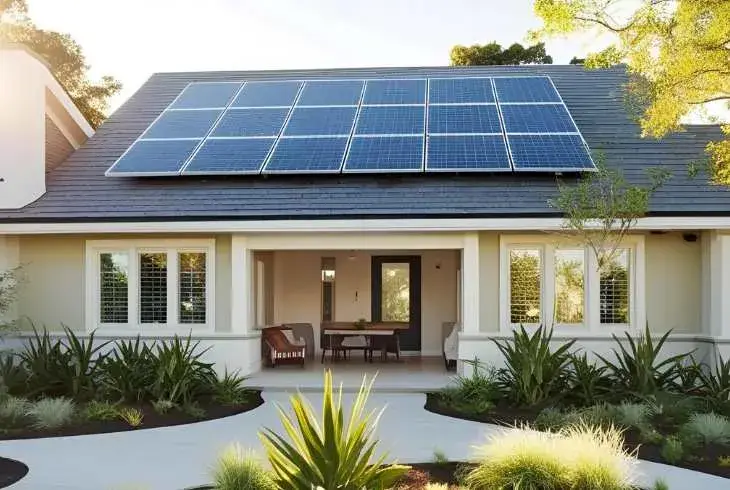Energy Efficient HVAC System Guide 2025
Last Updated: Apr 24, 2025
Want to lower your energy bills and improve comfort? This guide shows you how to choose the most energy efficient HVAC system and boost your heating and cooling efficiency today.
What Makes an HVAC System Energy Efficient

A truly energy efficient HVAC system provides reliable heating and cooling while using the least amount of energy possible. This efficiency is measured using standard industry ratings, each offering insights into system performance under specific conditions.
Key HVAC Efficiency Ratings Explained
- SEER - Seasonal Energy Efficiency Ratio
Measures cooling efficiency over an entire cooling season. The higher the SEER, the more energy efficient the system. A SEER rating of 20+ is considered excellent. - HSPF - Heating Seasonal Performance Factor
Applies to heat pumps and indicates heating efficiency over the heating season. A higher HSPF rating means the system uses less electricity to generate heat. - EER - Energy Efficiency Ratio
Represents cooling efficiency at a specific outdoor temperature (typically 95°F). Useful for evaluating systems in hot climates. - AFUE - Annual Fuel Utilization Efficiency
Used for furnaces and boilers. Shows what percentage of fuel is converted into usable heat. For example, a 95% AFUE means 95% of fuel becomes heat.
Why These Ratings Matter
These ratings help you compare HVAC systems and choose one that balances comfort, cost, and environmental impact. Higher rated systems may cost more initially but lead to long term energy savings.
Look for ENERGY STAR certified models, which meet or exceed federal efficiency standards and often qualify for valuable rebates and tax incentives.
Top Energy Efficient HVAC Systems in 2025
Looking for the best HVAC system to save energy and money? Here's a breakdown of the top energy efficient HVAC systems for 2025, including how they work and which homes they suit best.
1. Air Source Heat Pumps
- Best for: Most U.S. climates (mild to moderate winters)
- Efficiency: SEER 20+ / HSPF 10+
- How it works: Transfers heat between indoor and outdoor air
- Benefits: Year round comfort, lower costs, eligible for rebates
2. Geothermal Heat Pumps
- Best for: Homes with space for underground loops
- Efficiency: SEER 25-30+ / HSPF 12-13+
- How it works: Uses underground pipes to exchange heat with the earth
- Benefits: Extremely efficient, durable, low maintenance
3. Ductless Mini Split Systems
- Best for: Homes without ducts, remodels, or room additions
- Efficiency: SEER 20-28 / HSPF 10-12
- How it works: Indoor units connect to an outdoor compressor without ductwork
- Benefits: Zoned control, efficient, quiet operation
4. High Efficiency Furnaces
- Best for: Cold climates with high heating needs
- Efficiency: AFUE 95% - 98.5%
- How it works: Converts fuel to heat with minimal waste
- Benefits: Powerful heating, reliable in freezing temperatures
5. Hybrid Heat Systems (Dual Fuel)
- Best for: Regions with mixed weather patterns
- Efficiency: SEER 20+ / AFUE 90-95%
- How it works: Combines heat pump with a gas furnace and switches for best efficiency
- Benefits: Flexible, fuel-saving, cost effective throughout the year

How to Choose the Right HVAC System for Your Home
- Match the system size to your home layout.
- Consider your local climate before choosing.
- Check ductwork or go ductless for older homes.
- Start with a professional home energy audit.
How HVAC Efficiency Is Measured
- SEER for seasonal cooling efficiency
- EER for high temperature performance
- HSPF for heat pump heating
- AFUE for fuel based heating systems
Understanding these ratings helps you compare systems accurately.
Tips to Maximize Heating and Cooling Efficiency

- Use smart thermostats to automate settings
- Replace filters regularly
- Seal ducts and insulate attics
- Maintain units seasonally
- Use fans to circulate air effectively
Rebates and Incentives to Make HVAC Upgrades Affordable

- Federal tax credits up to $2,000
- Local rebates through utility companies
- Mass Save and HEAT loans for 0% financing
- ENERGY STAR Rebate Finder for real-time offers
Understanding HVAC System Components
- Furnace heats air
- AC or heat pump cools or transfers heat
- Thermostat controls the system
- Ductwork distributes air
- Filters clean air and ensure airflow
- Vents deliver air into each room
Conclusion
Choosing an energy efficient HVAC system is one of the best ways to reduce costs, improve comfort, and support sustainability. Understand efficiency metrics, select the right system, and use rebates to make the most of your upgrade.





